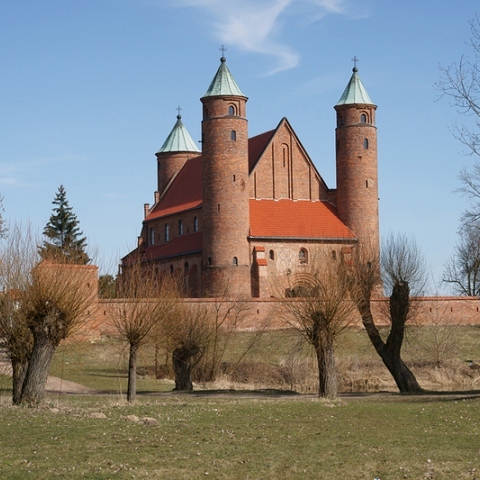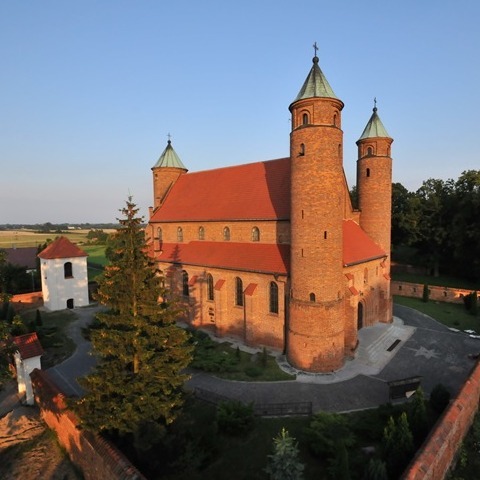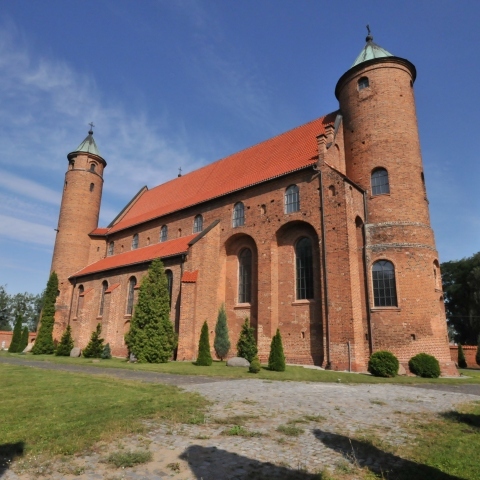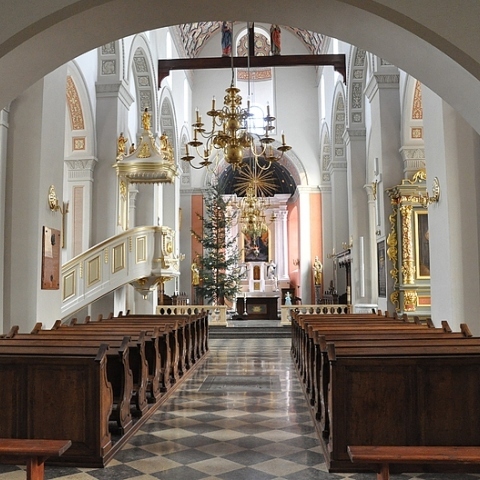Composers / Fryderyk Chopin / Places catalog
Brochów
Brochów, a small Mazovian village 11 km north of Żelazowa Wola, was definitely a place of great significance to the Chopin family. Mikołaj Chopin and Tekla Justyna Krzyżanowska were married in the Church of SS Roch and John the Baptist on 28 June 1806 and had their second child, Fryderyk Franciszek Chopin, baptised there on 23 April 1810. The baptismal register, in which Franciszek Grembecki is recorded as the child’s godfather, is still there. Grembecki was probably acting as a proxy for Count Fryderyk Skarbek, who was studying in Paris at the time. As the baby’s life had been in danger, there had earlier been an emergency baptism in Żelazowa Wola, attended by Countess Ludwika Skarbek and her son Fryderyk Skarbek, later recognised by the Chopin family as their son’s godfather. Fryderyk Skarbek’s sister Anna (later Wiesiołowska) is mentioned in the documents as the godmother.
Apart from the baptismal register, the entry for the composer in the official register of births reads as follows: ‘At three o’clock in the afternoon of the twenty-third day of the month of April in the year eighteen hundred and ten, the father, Mikołaj Chopyn [sic], aged forty years and resident in the village of Żelazowa Wola, stood before me, the Brochów Parish Priest, in my capacity as registrar of the parish commune of Brochów, district of Sochaczew, county of Warsaw, and presented me with a male child born in his home at six o’clock in the evening of the twenty-second day of the month of February of the current year, declaring it to be the issue of himself and his spouse Justyna née Krzyżanowska, aged twenty-eight years, and requesting that it be given the two names Fryderyk Franciszek. After making the above declaration and presenting the child to me in the presence of Józef Wyrzykowski, a steward aged thirty-eight years, and Fryderyk Geszt, aged forty years, both resident in the village of Żelazowa Wola, the father and the two witnesses, after the reading of the birth certificate, avowed that they could write. We signed the present certificate. Fr Jan Duchnowski, Brochów parish priest in his capacity as registrar; Mikołaj Chopin, father’.
According to his birth certificate, Fryderyk Chopin came into the world on 22 February 1810, but conventional history has it that he and his immediate family celebrated his birthday on 1 March. Some researchers, including Piotr Mysłakowski, have noted numerous uncertainties surrounding Chopin’s certificates of birth and baptism. For this reason, these documents cannot be treated as irrefutable sources of information regarding Chopin’s date of birth (for either the day or the year).
Another major event in the lives of the Chopin family took place in the Brochów church: the marriage ceremony between the composer’s older sister Ludwika and Józef Kalasanty Jędrzejewicz, in 1832. It seems reasonable to assume that the Chopins visited the church when circumstances allowed whenever they were staying with the Skarbeks in nearby Żelazowa Wola.
The first mention of a church in Brochów dates back to 1113. In 1351, that wooden building was replaced by a single-aisle brick church, which in turn was rebuilt, on the initiative of Jan Brochowski, in 1551–1561. The architect was Jan Baptysta Wenecjanin (who also designed the Barbican in Warsaw). The church now had three aisles and was fortified by the addition of distinctive corner towers and the construction of a defensive wall with arrow slits around it. The church was destroyed during the Polish-Swedish War (1600–1629) and rebuilt by the then owner, Olbracht Adrian Lasocki, in 1662–1665. The Brochów property remained in the hands of the Lasockis until 1931. The Baroque interior decor survived until 1816, when it was redone in the Classical style. The church suffered extensive damage (including a vault collapse) during the First World War as a result of several months of German artillery bombardment. Once hostilities had ceased, the church was rebuilt, with an effort made to remain true to tradition while simultaneously embracing the new art deco style. The work was completed in 1933. During the Second World War, the Battle of the Bzura, one of the largest battles of the 1939 September Campaign, was fought around Brochów, and the church was destroyed once more. It was rebuilt in 1946–1949.
The Brochów church, on the banks of the Bzura, is defined as a fortified neoclassical basilica, and as such it is a sui generis example of Polish sacred architecture. The building has Gothic, Renaissance and Neo-Romanesque features. Particularly striking are the three cylindrical towers. Two stand on either side of the Neo-Romanesque portal and the third stands over the sanctuary. This is typical of North Italian architecture but is seldom encountered in Poland. It is worth examining the barrel vault without lunettes, with its coffered grid adorned with painted decorations. The bicentenary of the birth of Chopin provided an opportunity to undertake conservation work, made possible through the financial support of the Ministry of Culture. The remnants of the Renaissance paintings that were found and subsequently restored became the basis for reconstructing the decorations on the vault. New furnishings and fixtures, including marble altars, pews, stalls and a pulpit, constructed on the basis of archive photographs, were installed. A statue of Christ crucified, damaged during the First World War, was reconstructed, and the flooring and stained glass windows were replaced.
There is a plaque commemorating the baptism of Fryderyk Chopin inside the church (to the left of the nave). This was unveiled in 1993.
-

Chopin baptistry in church in Brochów. Katolicka Agencja Informacyjna.
-

Church of St John the Baptist in Brochów. Phot. Andrzej Bagiński.
-

Church of St John the Baptist in Brochów. Phot. from Chopin 2010 Celebration Office archive.
-

Church of St John the Baptist in Brochów. Phot. from Chopin 2010 Celebration Office archive.
-

Interior of church in Brochów. Phot. Tomasz Dejterowski.